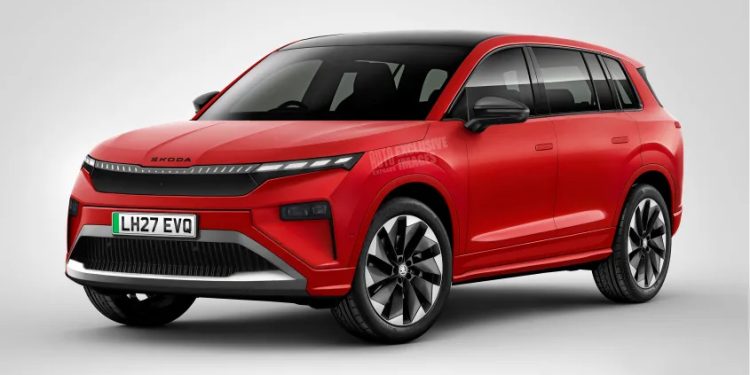Skoda’s flagship seven-seat SUV is electric
Words NZ Autocar | Images Auto Express
How to follow up on the success of the seven-seat Skoda Kodiaq? It would appear the Czech car maker has gone for an all-electric alternative incorporating the modern solid styling of the Vision 7S and Space concepts.
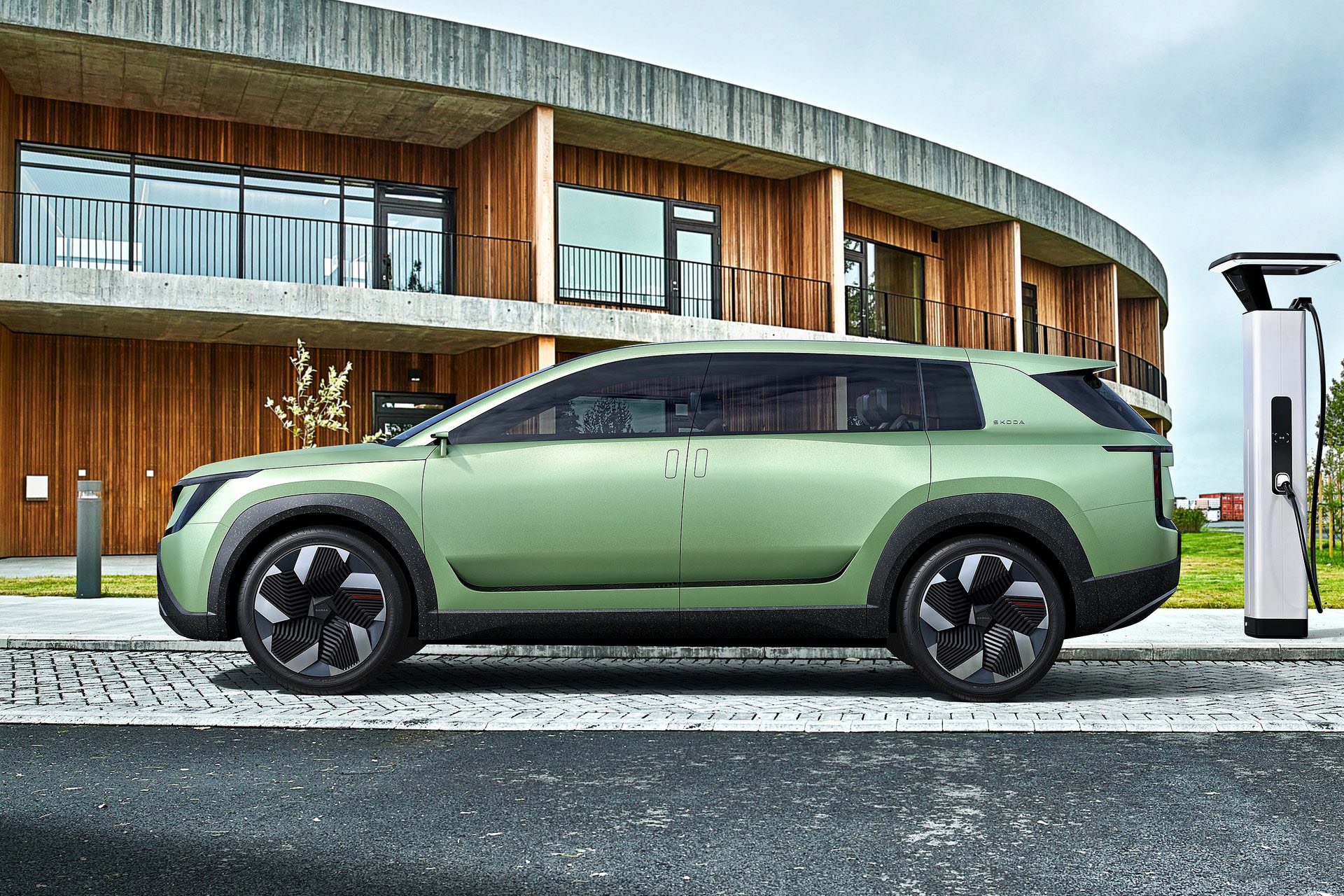
Up front is the ‘Tech Deck’ face of modern solid styling, a slimmer version of the traditional Skoda grille. Within this panel are sensors, and radar and camera units for the car’s driver assist systems. DRLs should extend to the front wings.
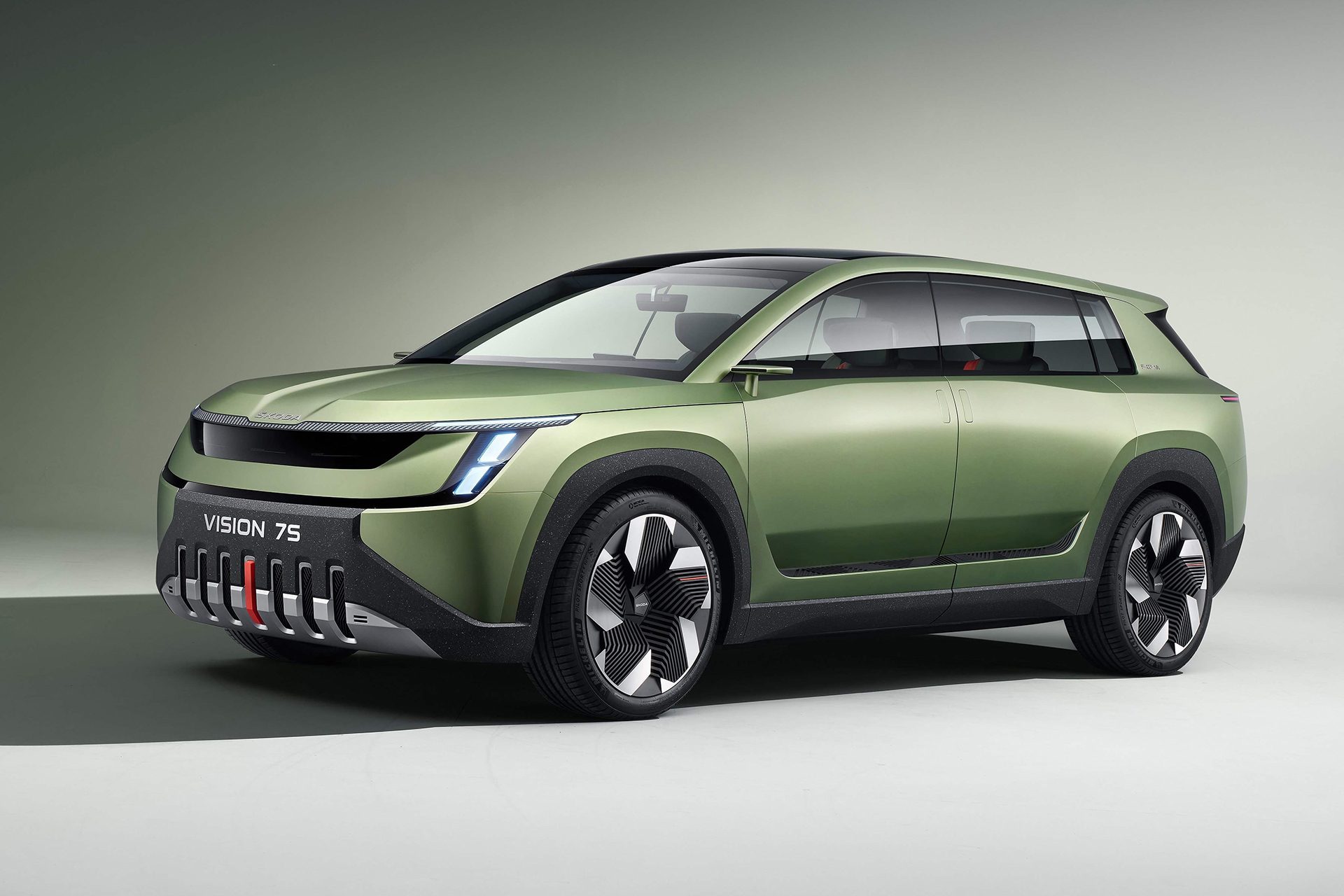
Other cues from the Vision S include a twin-fin roof spoiler and a thin taillight design that extends onto the bootlid. The overall shape will be close to the concept’s, too, with a square front end and traditional SUV proportions. However, short overhangs at the rear will help maximise interior space for passengers and their luggage.
The new family SUV is 4.9m, substantially bigger than Kodiaq (4758mm) but less than Hyundai Ioniq 9 (5060mm) or Kia EV9 (5015mm).
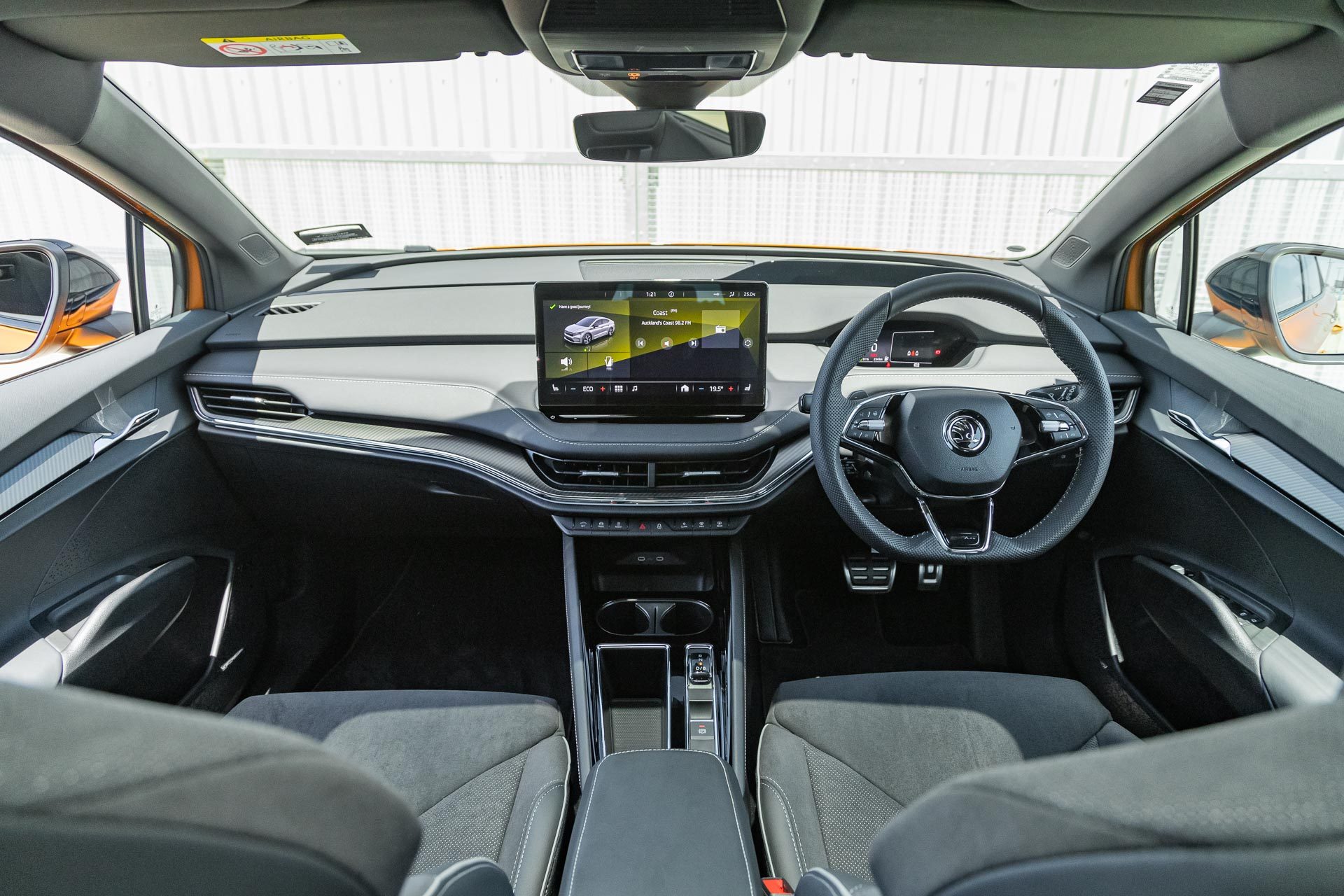
The cabin layout is likely to be similar to those of the Enyaq and Elroq, with a huge central touchscreen and a much smaller driver’s display.
Expect a host of ‘Simply Clever’ touches, including ‘Smart Dials’. Each dial has a small display, and pressing them toggles between the functions they’re responsible for.
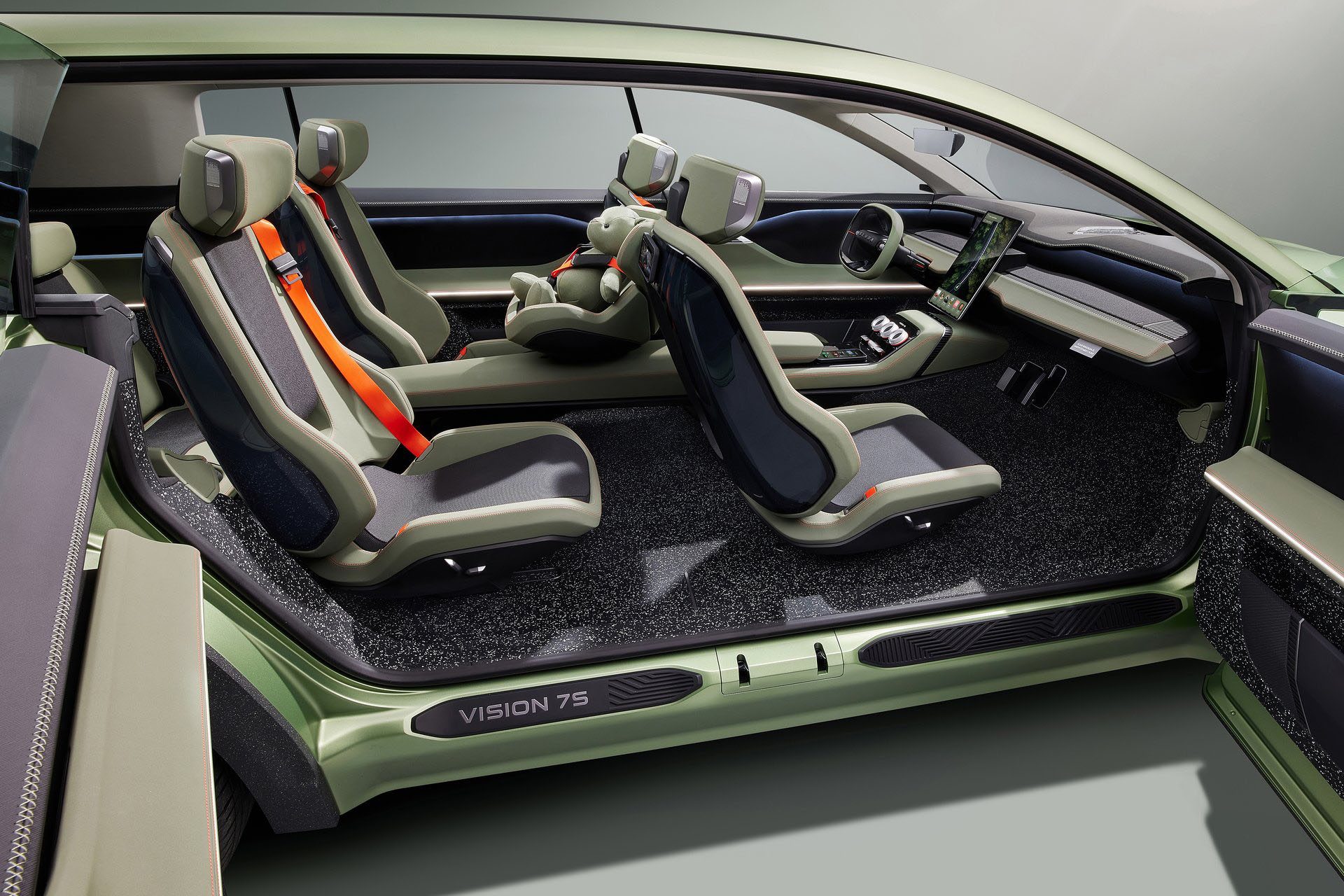
The chassis will in all likelihood be the MEB electric-car platform that Elroq and Enyaq use. Likely as not, it will get the 86kWh battery pack with a 200kW maximum charging speed, like cousin the ID. Buzz LWB. Range should be almost 600km while a 10 to 80 per cent top-up will take less than 30 minutes.
Expect the choice of a single-motor rear-drive variant or dual-motor all-wheel-drive powertrain.
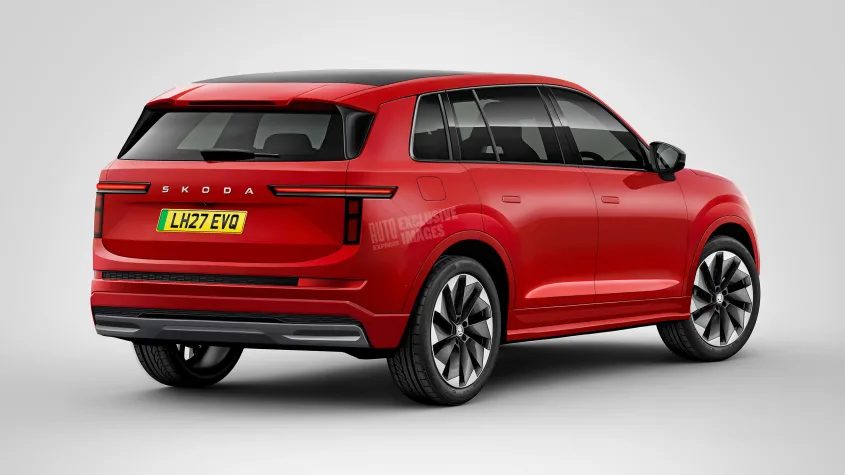
The final name for this vehicle is yet to be divulged. However, there’s time enough for that decision as it isn’t due until 2027.
Read our comparison of Skoda Enyaq vs Subaru Solterra.
Skoda Epiq will launch ahead of that, probably early next year. It will use the MEB Entry platform to keep costs down.
An electric estate as an option to Octavia Estate is also due at some point, probably 2027.


